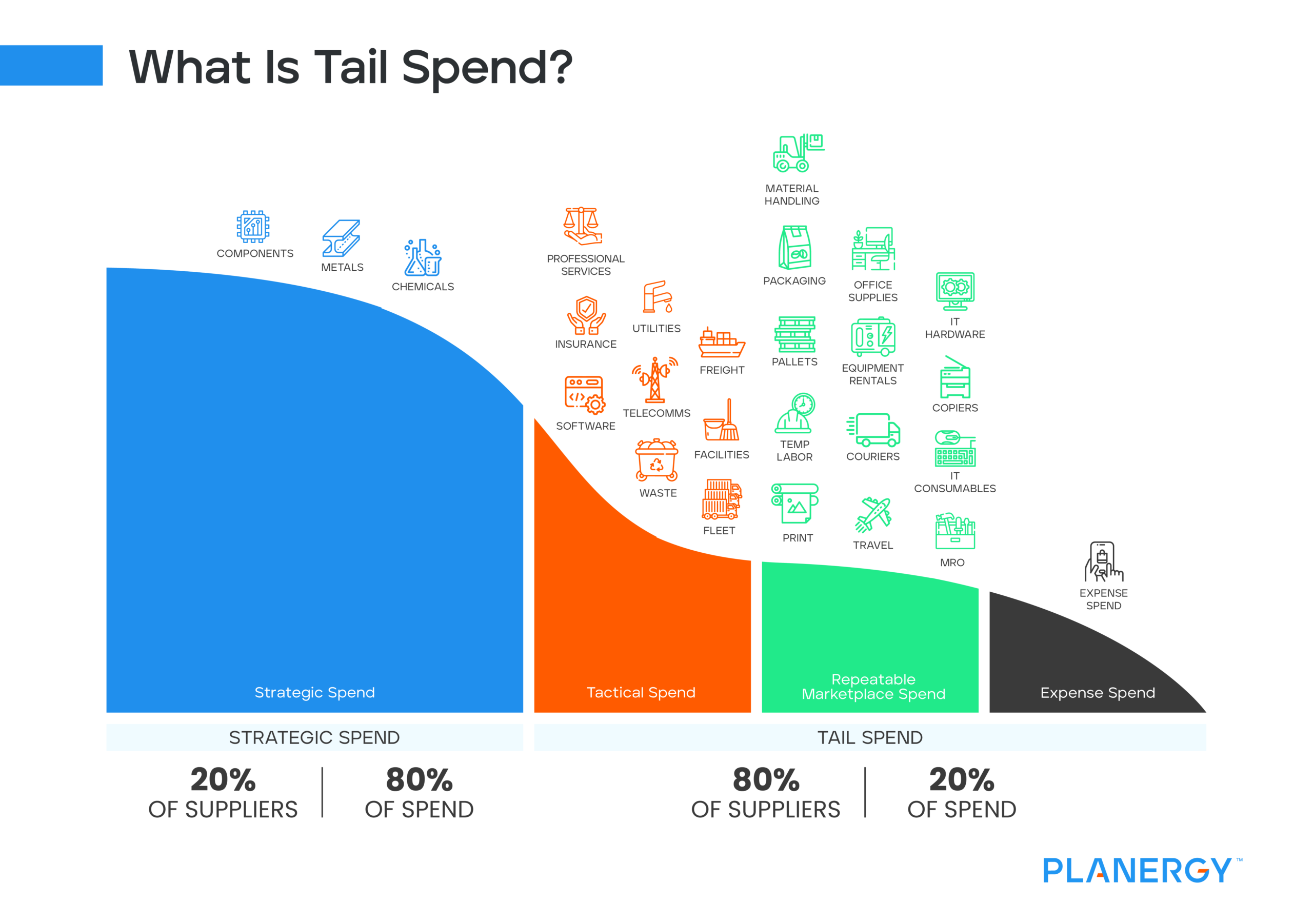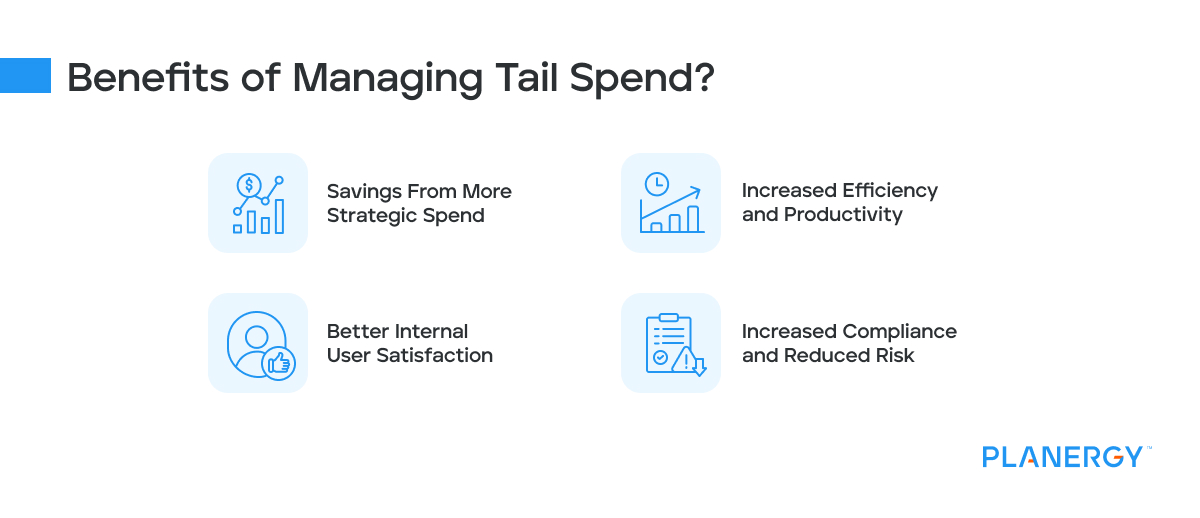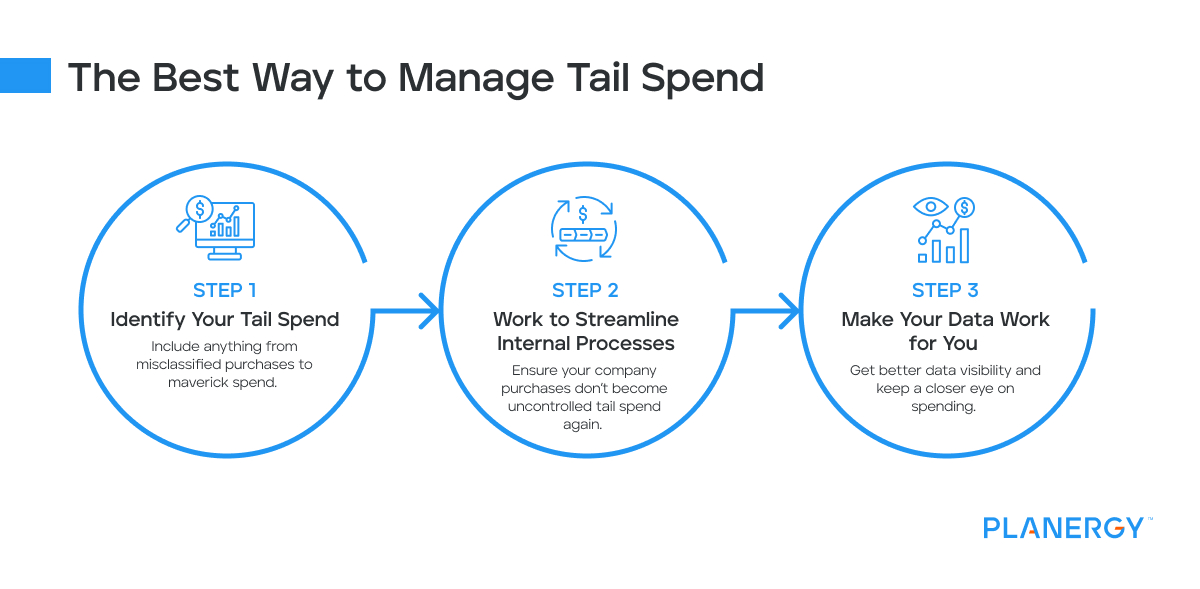From there, you can take the necessary actions to minimize wasteful spending and gain back control over all company purchases.
Identify Your Tail Spend
Tail spend can include anything from misclassified purchases to maverick spend.
That’s why it’s important to reach a consensus on how your organization defines tail spend (this will vary depending on the organization) and determine where it is happening within the company.
Most commonly, organizations define tail spend by calculating the ratio of spend to suppliers—classifying tail spend as “all purchasing with vendors other than the 20% with whom they have the highest spend.”
To find it, you’ll need to consolidate your spend data from all sources into one unified data source (which is easier with dedicated procurement management software).
From there, you’ll define tail spend as it relates to your company and create a filter for those transactions.
This could be based on dollar amounts, infrequent vendor usage, or other parameters. Then you can identify and calculate your tail spend.
Once you’ve sorted out which expenditures are having the largest effect on tail spend, you can start to look for savings opportunities.
Look for ways to achieve cost reduction by putting limits on transactions and total spend for areas that are creating the most tail spend costs.
Generally (and depending on the size of your company), you’ll find that tail spend expenditures fit within one of the following categories:
Hidden Tail
This is where the biggest suppliers are. These are generally part of strategically managed spend, with contract management in place.
However, some of this spend isn’t covered by contracts because those contracts don’t include the specific materials or services being purchased—or because purchases are non-compliant.
Head of the Tail
These are larger but irregular or infrequent purchases that don’t fit into normal procurement initiatives.
In this segment, you’ll find the spend that isn’t strategically managed, though spend with these suppliers could be anywhere from $50,000 to $1 million per year (depending on the size of your organization).
Middle of the Tail
These are purchases that include a large number of suppliers for the same types of purchases.
These may be in the $2,000 to $200,000 range per supplier.
The middle of the tail isn’t strategically managed because the spend per supplier is too small, but consolidating to fewer vendors with negotiated contracts could help.
Tail of the Tail
This is suppliers with less than $2,000 in spend.
This area includes many one-off purchases with a large number of suppliers.
This is the hardest part of tail spend to manage but can add up to a significant amount.
Using software for all purchases is the best way to get this under control.
Work to Streamline Internal Processes
Streamlining internal workflows gives you better data visibility, reduces the number of overall suppliers, and helps keep a closer eye on spending.
The ideal way to achieve this is with an e-procurement system that requires employees to fill out formal purchase requisitions for approval before converting them to purchase orders.
The system should have a list of approved vendors and products to choose from within a guided buying environment. Integrating with supplier PunchOut catalogs can help here.
This will curb tail spending outside strategically managed contracts by making it easy for employees to make purchases within the established system.
You can then implement a six-month “streamlining” program for all segments of the tail.
This involves moving uncontrolled tail spend into strategically managed channels, such as guided buying catalogs or other automated buying channels via the e-procurement system.
As more tail spend is moved to these channels, you gain more control.
Make Your Data Work for You
After you’ve streamlined your processes by deploying a procurement solution like PLANERGY in your organization, it’s time to work on sourcing and contracting.
This will ensure the majority of your company purchases are handled strategically—and don’t become uncontrolled tail spend.
Using the data provided by your procurement system, you can analyze your many tail-spend vendors.
You can see which ones are used more than others, and which are in similar categories that can be consolidated into just one vendor, rather than several.
From there, you can initiate contract negotiations with the most useful vendors, bring them into your procurement system, and add them to your catalog and guided buying process.
This will make it easier for staff to select from a smaller number of pre-approved vendors, rather than a vast number of various vendors without a contract in place.
After you’ve implemented the procurement system and got more vendors under contract, it’s time to put your data to work.
You’ll want to measure improvement in your tail spend performance with various metrics such as cost reduction and cost avoidance, transaction costs, and improved spend visibility.








